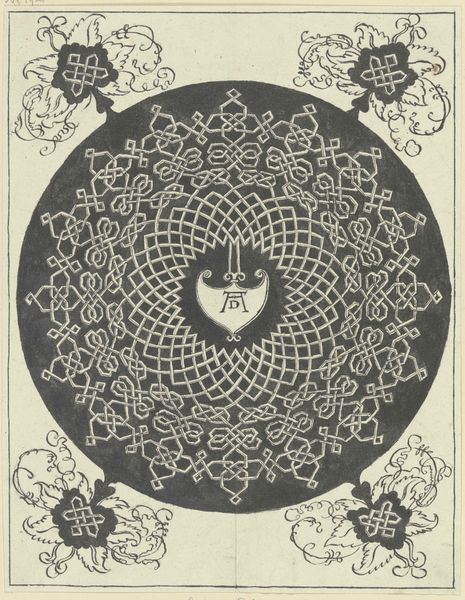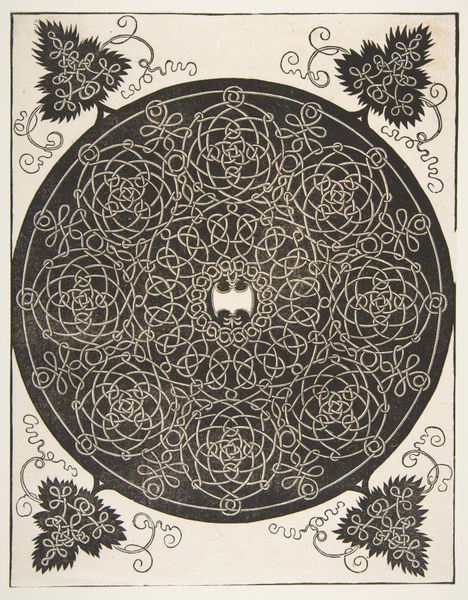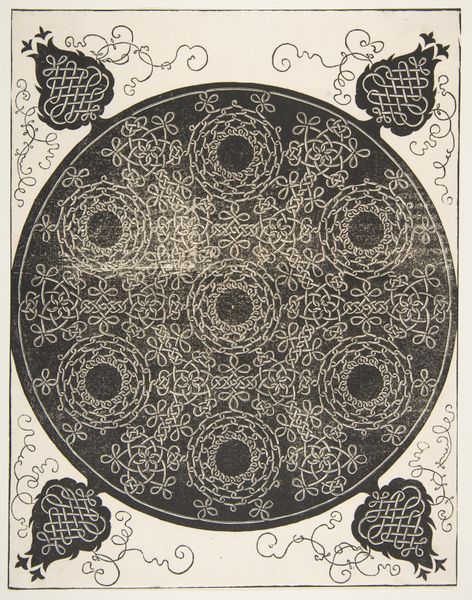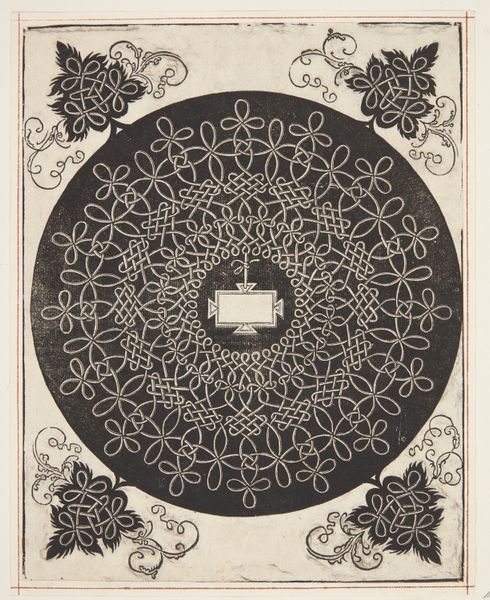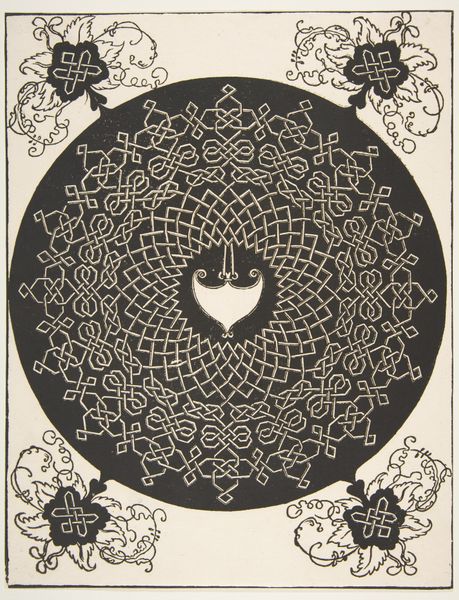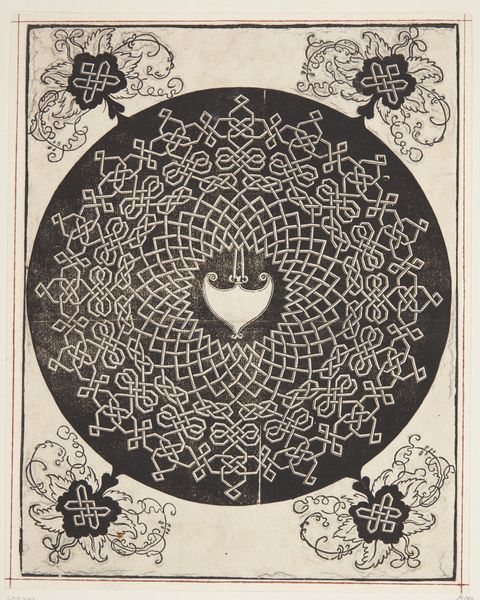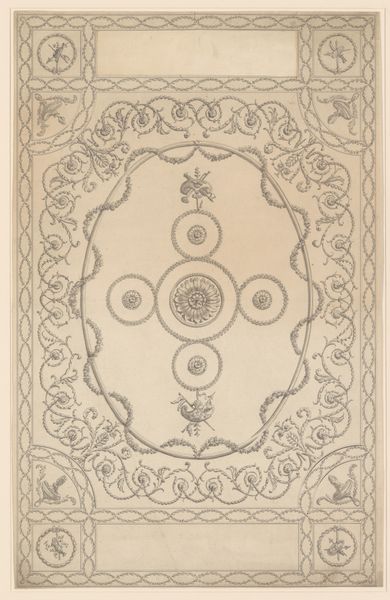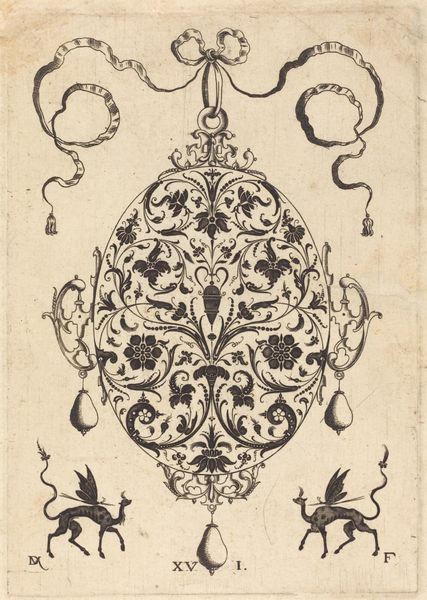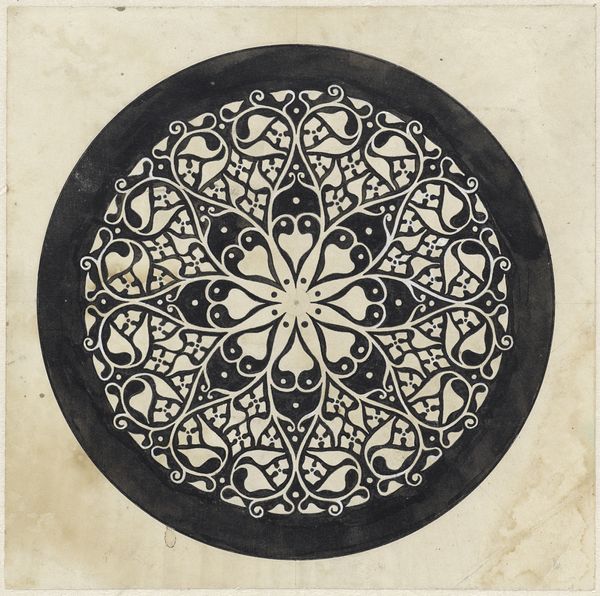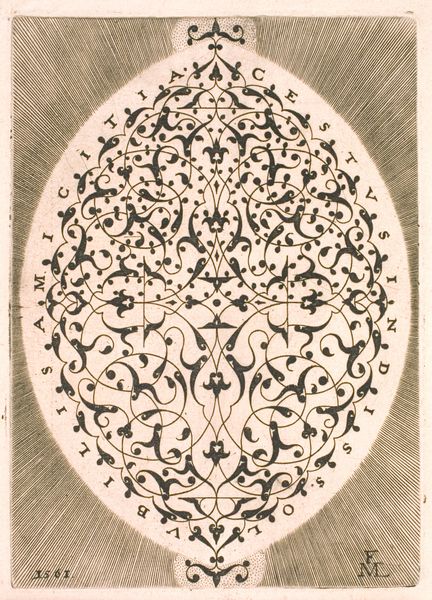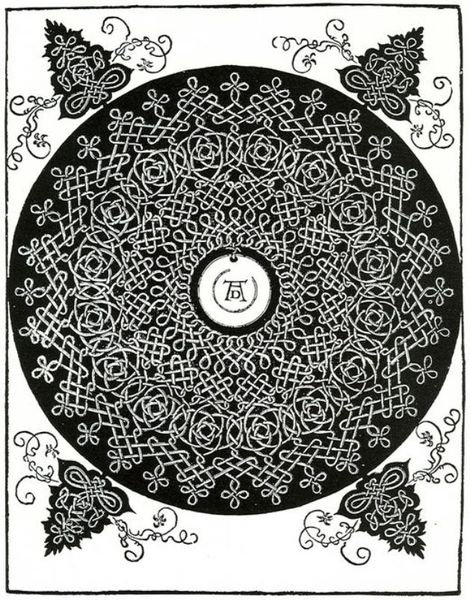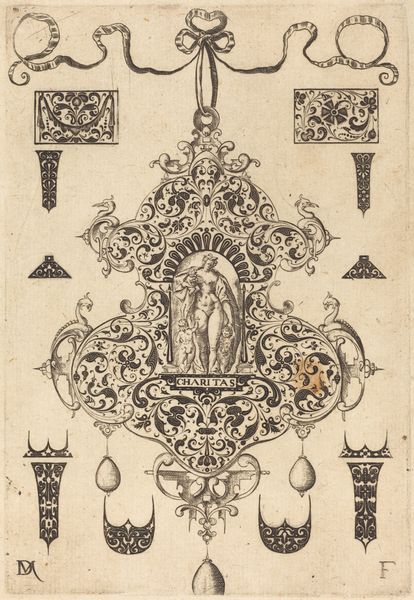
print, engraving
# print
#
geometric
#
northern-renaissance
#
decorative-art
#
engraving
Dimensions: height 270 mm, width 209 mm
Copyright: Rijks Museum: Open Domain
Albrecht Durer created this embroidery pattern with seven floral motifs using woodcut, a printmaking technique, during the late 15th or early 16th century. During the Renaissance, patterns like these allowed for the wide dissemination of visual ideas, influencing textile production across Europe. Embroidery was a highly gendered activity, generally associated with women and domestic craft. Durer’s engagement with embroidery patterns reveals the complex interplay between fine art and craft during this period, and the permeable boundaries of gendered labor. Durer, who elevated printmaking to the status of fine art, may have seen similar potential in embroidery. This design, with its symmetrical, interlaced patterns, evokes a sense of both order and intricacy. Imagine the painstaking work required to translate this design into fabric, each stitch a testament to skill and patience. Ultimately, this print serves as a reminder of the rich cultural exchange that occurred during the Renaissance, and of the ways in which art and craft intersected to shape both individual expression, and broader societal trends.
Comments
No comments
Be the first to comment and join the conversation on the ultimate creative platform.

